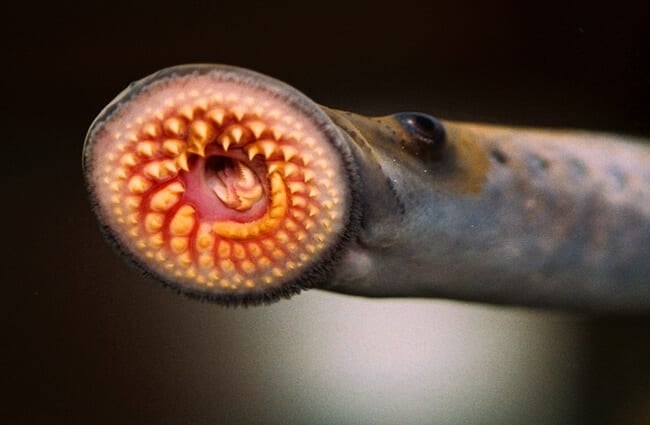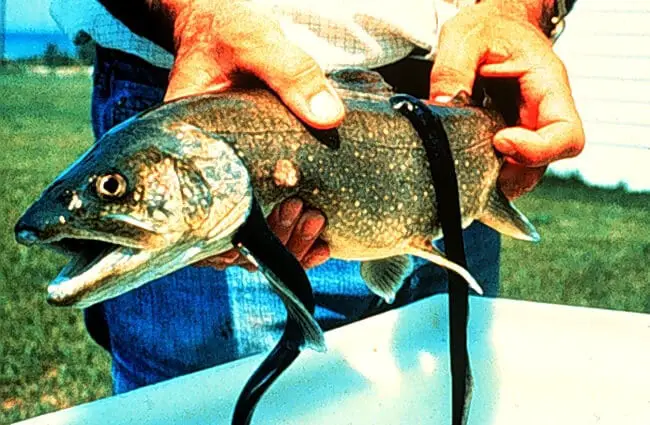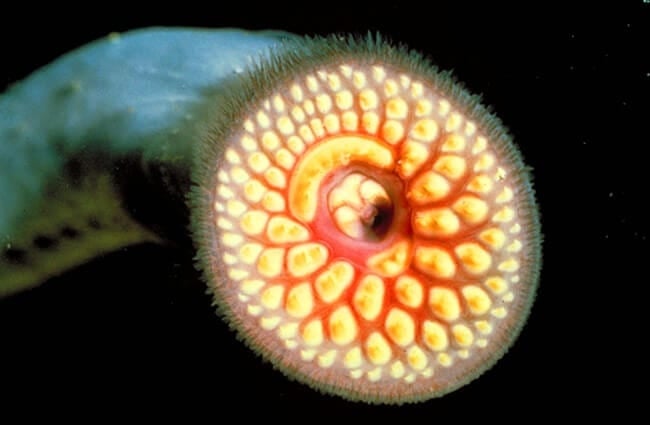Deep beneath the waves and within the winding currents of rivers lies a creature that has defied the ages, a living relic from a time before jaws and scales dominated the aquatic world. The lamprey, often misunderstood and sometimes feared, is a testament to evolutionary endurance, offering a unique window into the ancient past of vertebrates. Far from being mere parasites, these fascinating animals play complex roles in their ecosystems and hold secrets vital to understanding life on Earth.
Embark on a journey to uncover the mysteries of the lamprey, from its primordial origins to its intricate life cycle, its impact on aquatic environments, and its surprising connections to human history and science.

An Ancient Lineage: What Exactly is a Lamprey?
Lampreys belong to a group of jawless fish known as Agnatha, making them distinct from the vast majority of fish species that possess hinged jaws. Their lineage stretches back over 360 million years, predating dinosaurs and most modern fish. This ancient heritage makes them invaluable subjects for evolutionary biologists.
Physical Characteristics: A Design Built for Survival
A lamprey’s appearance is undeniably unique. Lacking scales, their elongated, eel-like bodies are smooth and often mottled in color, providing camouflage in their diverse habitats. Instead of jaws, they possess a distinctive, disc-shaped mouth lined with rows of sharp, horny teeth and a rasping tongue. This specialized oral disc allows them to attach to surfaces, including their host fish in parasitic species. Their skeleton is entirely cartilaginous, similar to sharks and rays, rather than bony. They breathe through a series of seven gill openings located behind the head.
Diversity in the Depths: Parasitic and Non-Parasitic Lampreys
Not all lampreys are the blood-sucking villains often portrayed. The lamprey family (Petromyzontidae) includes both parasitic and non-parasitic species. Parasitic lampreys, like the infamous Sea Lamprey, spend their adult lives feeding on the blood and bodily fluids of other fish. In contrast, non-parasitic species, often called brook lampreys, do not feed as adults. Their adult stage is solely dedicated to reproduction, relying on energy reserves built during their larval phase.
Where to Find Them: Lamprey Habitats
Lampreys exhibit a remarkable range of habitats, showcasing their adaptability:
- Freshwater Rivers and Streams: Many species, particularly non-parasitic brook lampreys and the larval stages of all lampreys, reside exclusively in freshwater. They prefer clear, cool water with sandy or silty bottoms where their larvae can burrow.
- Coastal Marine Environments: Anadromous species, such as the Sea Lamprey, spend their adult feeding lives in saltwater oceans before migrating back to freshwater rivers to spawn.
- Great Lakes and Other Large Freshwater Bodies: Some populations of Sea Lamprey have become landlocked in large freshwater systems, such as the North American Great Lakes, where they complete their entire life cycle without returning to the ocean.
Animal lovers hoping to spot a lamprey in the wild should focus their search during the spring and early summer spawning season. Look for clear, gravelly stream beds where adults construct their nests. Larval lampreys, known as ammocoetes, are much harder to find as they live buried in soft sediments.

The Journey of Life: Lamprey Reproduction and Development
The lamprey life cycle is one of the most complex and fascinating among vertebrates, involving distinct stages and dramatic transformations.
Spawning Migration and Nest Building
The reproductive journey begins with an arduous migration. Adult lampreys, whether from the ocean or large lakes, navigate upstream into freshwater rivers and streams. They are driven by an innate urge to find suitable spawning grounds, typically areas with gravelly bottoms and moderate currents. Males and females work together to construct a “redd,” a shallow depression in the streambed, by moving stones with their oral discs and bodies.
Mating and Fertilization
During spawning, multiple lampreys may gather at a single redd. The female releases thousands of small, sticky eggs, which are then externally fertilized by the male. After spawning, adult lampreys, having expended all their energy reserves, typically die within a few days or weeks. This semelparous reproductive strategy, where an organism reproduces once and then dies, is common in many fish species.
The Ammocoete Larva: A Filter-Feeding Childhood
The fertilized eggs hatch into a larval stage known as an ammocoete. These blind, worm-like larvae are completely different from their adult counterparts. They burrow into the soft sand and silt of the streambed, where they live as filter feeders, sifting microscopic organisms and detritus from the water. This larval stage can last for several years, sometimes up to a decade, depending on the species and environmental conditions. Ammocoetes are crucial indicators of water quality, as their long residency makes them sensitive to pollution.
Metamorphosis: A Dramatic Transformation
After years as a filter-feeding ammocoete, the lamprey undergoes a remarkable metamorphosis. This transformation is akin to that of an insect, where the larva rapidly develops adult features: eyes emerge, the oral disc forms with its characteristic teeth, and the internal organs reorganize to support a parasitic or non-feeding adult lifestyle. This metamorphosis typically occurs in late summer or autumn.
Adult Life: Feeding or Fasting
Post-metamorphosis, the young adult lampreys either migrate to the ocean or large lakes to begin their parasitic feeding phase (in parasitic species) or remain in freshwater, not feeding at all, and prepare for their final spawning migration (in non-parasitic species). The adult parasitic stage usually lasts for 1-2 years before they return to spawn.

Diet and Ecological Interactions: More Than Just a Sucker
The feeding habits of lampreys are central to their ecological roles and often define their reputation.
The Parasitic Lifestyle
Adult parasitic lampreys attach to host fish using their suction cup-like oral disc. They then use their rasping tongue and horny teeth to abrade the host’s skin, creating a wound through which they feed on blood and other bodily fluids. They secrete an anticoagulant to ensure a steady flow. While a single lamprey attachment may not be fatal to a large host, multiple attachments or attacks on smaller fish can lead to severe injury, infection, or death. This feeding strategy can have significant impacts on host fish populations, particularly in environments where lampreys are invasive.
The Filter-Feeding Larvae
In stark contrast, ammocoetes are benign filter feeders. They play a vital role in processing organic matter in stream sediments, contributing to nutrient cycling and maintaining water quality. Their presence indicates a healthy aquatic environment.
Lampreys in the Food Web
Despite their parasitic nature as adults, lampreys are also a food source for other animals. Ammocoetes are preyed upon by various fish, birds, and even some mammals. Adult lampreys, particularly during their spawning migrations, can become targets for predatory birds like eagles and ospreys, as well as larger fish and otters.
Evolutionary Significance: A Glimpse into the Past
Lampreys are often referred to as “living fossils” because their body plan has remained remarkably unchanged over millions of years. Their study provides crucial insights into the early evolution of vertebrates.
- Jawless Ancestors: As one of the few surviving jawless vertebrates, lampreys represent an ancient branch of the vertebrate tree, offering clues about the transition from invertebrate chordates to the first vertebrates.
- Cartilaginous Skeleton: Their cartilaginous skeleton is thought to be a primitive trait, predating the evolution of bone in other vertebrates.
- Unique Immune System: Lampreys possess a unique adaptive immune system that differs significantly from that of jawed vertebrates, providing alternative models for immunological research.

Lampreys and Humanity: Conflict, Cuisine, and Conservation
The relationship between lampreys and humans is a complex tapestry woven with threads of culinary tradition, ecological conflict, and scientific discovery.
A Historical Delicacy
For centuries, lampreys have been considered a delicacy in various cultures, particularly in Europe. Records show that lampreys were highly prized by royalty and commoners alike. King Henry I of England is famously said to have died from a “surfeit of lampreys,” a testament to their popularity. Today, they are still consumed in some regions, often smoked, pickled, or prepared in rich stews.
The Invasive Sea Lamprey: An Ecological Challenge
In North America, the Sea Lamprey has become a notorious invasive species in the Great Lakes. Following the construction of canals that bypassed natural barriers like Niagara Falls, Sea Lampreys gained access to the lakes in the early 20th century. With no natural predators and an abundance of large host fish, their populations exploded. This led to devastating declines in native fish populations, particularly lake trout, whitefish, and salmon, causing immense ecological and economic damage to the region’s fisheries. Extensive control programs, primarily using lampricides (selective pesticides that target lamprey larvae), trapping, and barriers, are ongoing to manage their populations.
Conservation of Native Lampreys
While the invasive Sea Lamprey poses a threat, many native lamprey species around the world face conservation challenges due to habitat degradation, pollution, and barriers to migration. Conservation efforts focus on protecting and restoring their freshwater spawning and larval habitats, ensuring healthy populations of these unique and ecologically important creatures.
Scientific Contributions
Lampreys are invaluable research subjects. Their simple nervous system makes them ideal for studying basic neurological functions, including locomotion and sensory processing. Their unique immune system provides insights into alternative evolutionary pathways for immunity. Furthermore, their ancient lineage continues to inform our understanding of vertebrate evolution.

Practical Insights and Fascinating Facts
Encountering a Lamprey in the Wild: What to Do
If a hiker or animal lover encounters a lamprey, particularly during its spawning migration, the best course of action is observation from a respectful distance. Lampreys are generally harmless to humans. They are not aggressive and will not attack. If you see a lamprey attached to a fish, it is best not to interfere, as attempting to remove it could further injure the host fish. In regions where invasive lampreys are a concern, reporting sightings of adult lampreys or signs of their activity (like wounded fish) to local wildlife authorities can be helpful for monitoring and control efforts.
Caring for Lampreys in Captivity: A Zookeeper’s Guide
Caring for lampreys in a captive environment requires specialized knowledge due to their unique biology. Zookeepers should consider the following:
- Habitat Simulation:
- Ammocoetes: Require deep beds of fine sand and silt for burrowing, mimicking their natural streambed habitat. Water flow should be gentle.
- Adults: For anadromous species, a large, well-filtered tank simulating either marine or freshwater river conditions is necessary depending on their life stage. Strong currents may be needed for spawning adults.
- Water Quality: Pristine water quality is paramount. Lampreys are highly sensitive to pollutants, ammonia, and nitrates. Regular testing and robust filtration are essential.
- Diet:
- Ammocoetes: Microscopic food particles, such as yeast, spirulina, or finely ground fish food, suspended in the water column.
- Parasitic Adults: Providing live host fish can be ethically challenging and requires careful consideration. Alternatives like bloodworms or specialized diets may be explored, though success varies. Many aquariums choose to display non-feeding adult brook lampreys or ammocoetes.
- Temperature: Species-specific temperature ranges must be maintained, typically cool to temperate waters.
- Avoidance:
- Stress: Minimize handling and sudden changes in environment.
- Incompatible Tank Mates: Do not house parasitic adults with other fish unless specifically for feeding purposes, which carries ethical implications.
- Poor Substrate: For ammocoetes, coarse gravel or bare bottoms are unsuitable and can cause injury or stress.
A Huge List of Interesting Lamprey Facts
- Lampreys have a single nostril located on the top of their head.
- Their eyes are relatively simple, especially in the larval stage where they are effectively blind.
- Some species can change color to better camouflage themselves in different environments.
- The anticoagulant secreted by parasitic lampreys is being studied for potential medical applications in humans.
- Lampreys possess a unique type of hemoglobin that is structurally different from that found in jawed vertebrates.
- The oldest known lamprey fossil, Mayomyzon pieckoensis, dates back approximately 360 million years.
- Despite their ancient lineage, lampreys are not considered “primitive” in the sense of being less evolved. They are highly adapted to their specific niches.
- The term “lamprey” is thought to derive from the Latin lampetra, possibly meaning “stone licker,” referring to their habit of attaching to rocks.
- Some native lamprey species are considered indicator species, meaning their presence or absence can signal the health of an aquatic ecosystem.
- Their cartilaginous skeleton is remarkably flexible, allowing them to navigate tight spaces and strong currents.
The Enduring Enigma of the Lamprey
From their ancient origins to their complex life cycles and diverse ecological roles, lampreys are far more than just “eels with teeth.” They are living laboratories of evolution, vital components of aquatic ecosystems, and a testament to the incredible diversity of life on Earth. Understanding and appreciating these unique creatures is not just an academic exercise, it is a step towards a deeper appreciation of our planet’s natural heritage and the intricate web of life that sustains us all. So, the next time you hear of a lamprey, remember its long and storied past, and the many secrets it still holds.

![Red Angus Closeup of a beautiful Red Angus cowPhoto by: U.S. Department of Agriculture [pubic domain]https://creativecommons.org/licenses/by/2.0/](https://animals.net/wp-content/uploads/2020/03/Red-Angus-4-238x178.jpg)




![Red Angus Closeup of a beautiful Red Angus cowPhoto by: U.S. Department of Agriculture [pubic domain]https://creativecommons.org/licenses/by/2.0/](https://animals.net/wp-content/uploads/2020/03/Red-Angus-4-100x75.jpg)

